Laptop Mag Verdict
If you're willing to splurge, the 2019 MacBook Pro is crazy fast, offers long battery life, and features a (moderately) improved keyboard.
Pros
- +
Superior speed
- +
Sharp, colorful display
- +
Powerful sound
- +
Lots of battery life
Cons
- -
Price starts high and gets crazy expensive
- -
Still uses 'Butterfly' keyboard
- -
No USB Type-A ports
Why you can trust Laptop Mag
Apple updated its 15-inch MacBook Pros with faster 9th Gen Intel processors, making them the fastest MacBooks ever. Another change, a modification to its controversial 'Butterfly' key switch, is supposed to increase reliability, though it doesn't address the shallow travel issue.
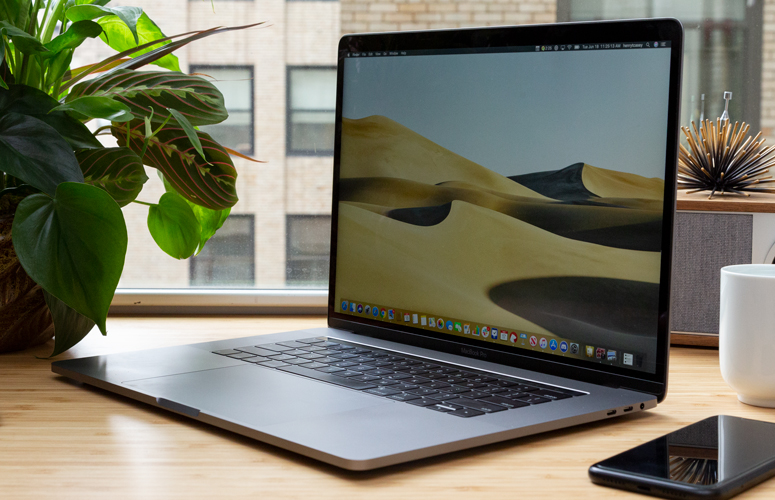
Still, this MacBook Pro offers all-day battery life, pumps out tons of volume, and features a bright, colorful and sharp display. Yes, the pros (pun intended, sorry) outweigh the cons, including Apple's aging design language. And when it comes to performance, this MacBook Pro is one of the best laptops around and one of the best business laptops for those who need to run demanding programs.
15-inch MacBook Pro 2019 cost and configuration options?
The 15-inch MacBook Pro was released in June 2019 starting at $2,399. The base model includes a 9th-generation Intel Core i7 processor, 16GB of memory, 256GB of SSD storage and a Radeon Pro 555X graphics card with 4GB of GDDR5 memory. If I were to buy a model with my own money, I'd upgrade this model to a 512GB SSD, which brings the total price to $2,599.
MORE: MacBook Pro 13-inch with Touch Bar (2019) - Full Review
We tested the maxed-out version of the 15-inch MacBook Pro 2019, which costs $6,549 and packs a 9th Gen Intel Core i9-9980HK processor (the 2.4-GHz version), 32GB of memory, a 4TB SSD and a Radeon Pro Vega 20 graphics card with 4GB of HBM2 memory.
Design
This iteration of the MacBook Pro has been out since 2016, but it feels even older, as it's visually similar to the 2012 to 2015 designs that introduced the Retina-resolution display. Slim and chic, but bearing an aesthetic that's both refined and aging, the MacBook Pro is both iconic and stale. It's not as cool as the latest 15-inch HP Spectre x360.
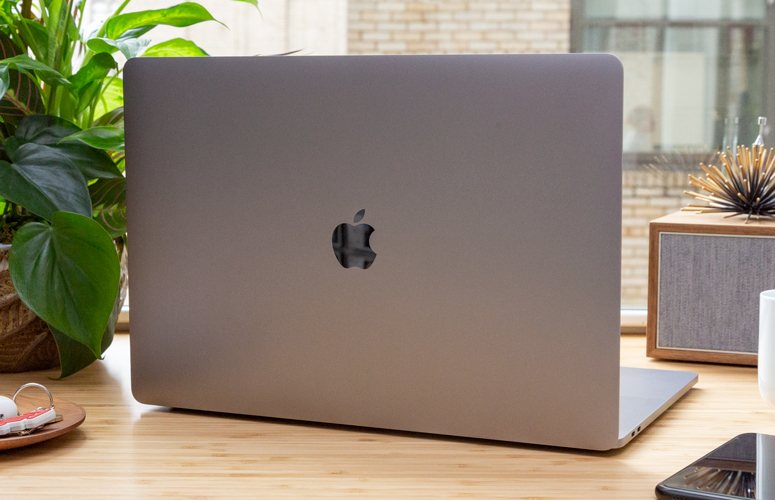
The other facet of the MacBook Pro design that's not holding up well over time is its display's bezels, particularly the 0.5-inch black bar above the screen. Side by side with the 2019 Huawei MateBook X Pro, which has 0.15-inch bezels, even the MacBook Pro's 0.3-inch side bezels look a tad chunky.
At 4 pounds and 0.6 inches thick, the 15-inch MacBook Pro is lighter than the Dell XPS 15 (4.2 pounds, 0.7~0.5 inches) and the HP Spectre x360 (4.6 pounds, 0.76 inches). The 13.9-inch MateBook X Pro (2.9 pounds, 0.6 inches) is lighter.
Ports and Touch Bar
While I appreciate the 15-inch MacBook Pro's quartet of Thunderbolt 3 ports, it's time we talked about its lack of the time-tested Type-A port, which is still important to many users - including pros. The XPS 15, MateBook X Pro and Spectre x360 all feature both Type-C and Type-A ports.
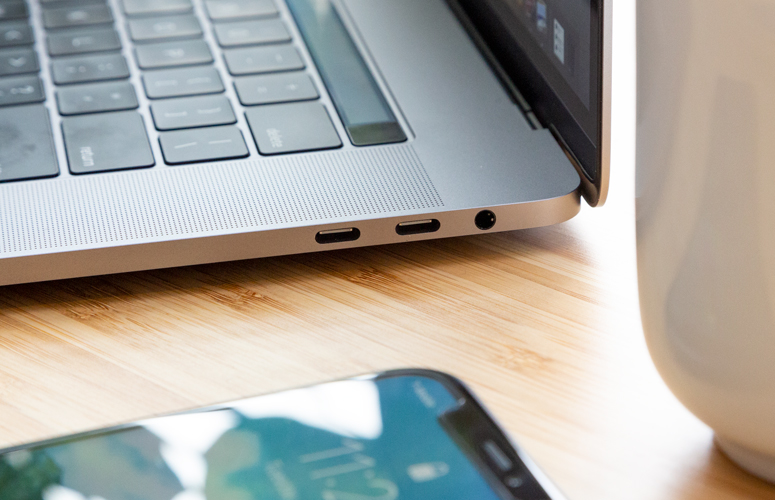
Apple's expectation that people should just carry around an adapter or hub -- many of us who are still using accessories with that non-reversible port -- is a lot to ask for when we're already throwing a ton of money at the company.
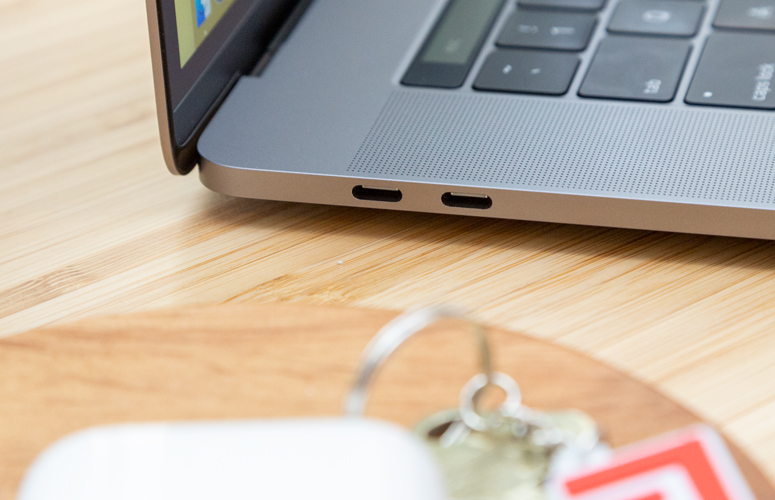
While Apple stays resistant to giving the MacBook a full, true touchscreen, the Touch Bar is found on every 2019 MacBook Pro.
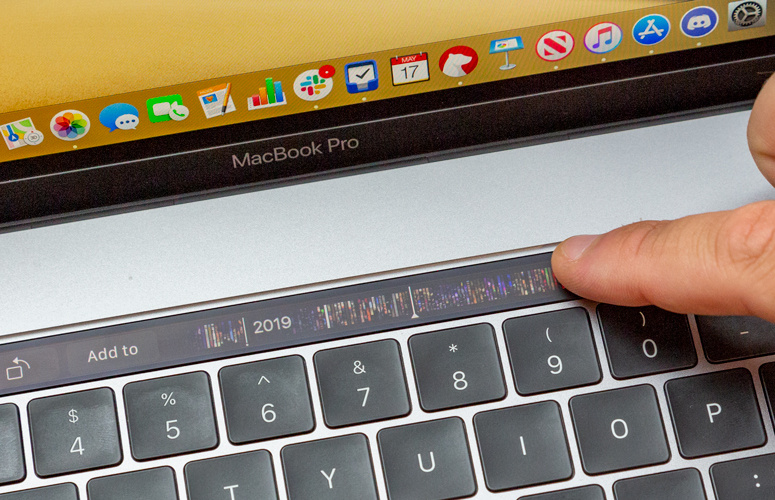
Unfortunately, its use is mixed, as I've mostly found it good for finding and inserting emojis. The best part of this bar is the Touch ID sensor, though Apple gave that to the MacBook Air without burdening it with a Touch Bar
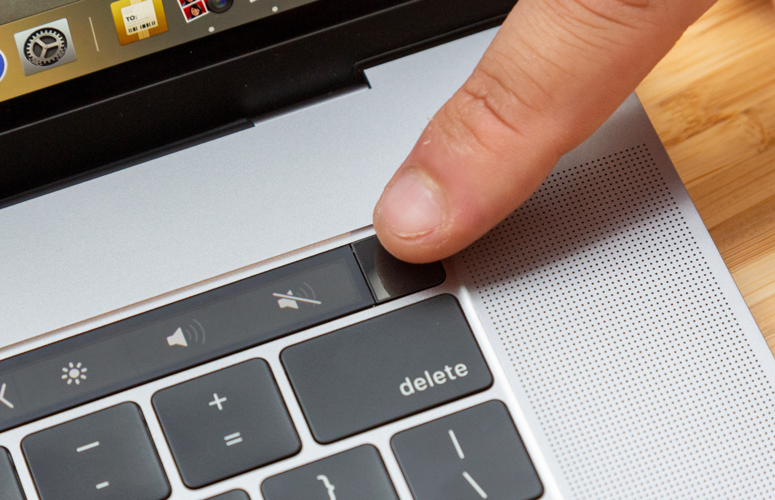
My biggest piece of advice is to remove the Siri button from your Touch Bar to avoid accidental actuation when touch-typing and missing the delete key by reaching too far (I'm far from the only one who's had this problem). Place the Mute button, or something else, in its place to leave yourself open to less disruptive mistakes.
Display
The new 15-inch MacBook Pro's screen is just as bright, colorful and sharp as we've come to expect from Apple. Watching a trailer for Spider-Man: Far From Home, the reds of Peter Parker's blood-shot eyes to the metallic gold of his armor showed that the MacBook Pro rendered colors well. Black shadows of rooms even looked super dark. The Retina Display also did a fine job of rendering the fiery details in the monster terrorizing Tower Bridge in London, and in the scrapes and scratches in the wall around graffiti of Iron Man's visage.
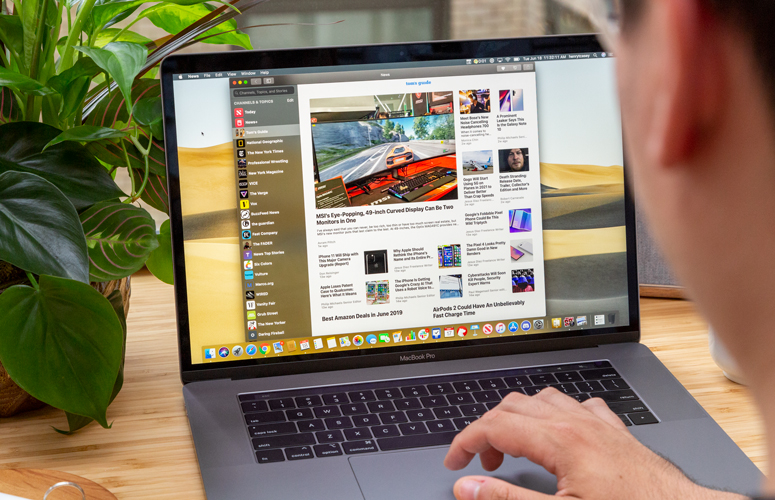
Our colorimeter rated the MacBook Pro's screen for producing 114% of the sRGB color spectrum. That's below the 144% workstation average, the rating from the Spectre x360 (157%), and similar to the scores from the Dell XPS 15 (115%), and the MateBook X Pro (104.2%).
Side by side with the Huawei MateBook X Pro, which has 0.15-inch bezels, even the MacBook Pro's 0.3-inch side bezels look a tad chunky.
The 15-inch MacBook Pro's panel emits up to 403 nits of brightness, which beats the 346-nit workstation average, the 371-nit XPS 15 and the 247-nit Spectre x360. The MateBook X Pro shines even brighter at 497 nits.
Keyboard and Touchpad
The MacBook Pro's keys offer a clicky typing experience that's rooted in the fourth iteration of Apple's controversial Butterfly-style key switch. The keys feature a super-shallow 0.6 millimeters of travel (well below the 1.5mm minimum that we look for), but require 71 grams of actuation force, which is above our 60-gram minimum. During my testing, I clicked to a rate of 70 words per minute (with 94% accuracy), which is a tad below my 80 wpm average.
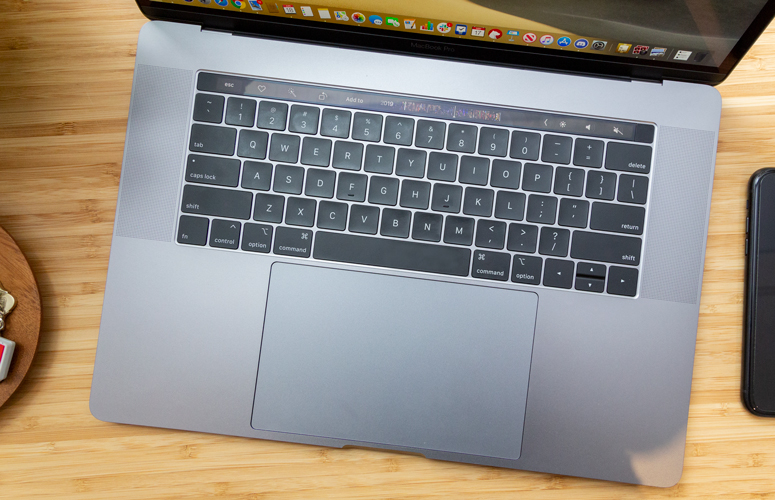
Apple has been in hot water over its Butterfly keyboard, especially when it comes to accidental double-clicks andstuck keys. The company says that it has employed "a new material" that's supposed to help solve these types of issues, but we won't know for sure until we've used the 15-inch MacBook Pro over several weeks.
MORE: Uh Oh: Apple's MacBooks Have a New Keyboard Problem
At 6.1 x 3.9 inches, the MacBook Pro's Force Touch trackpad accurately tracks your input and can fool most people with its haptic feedback, which substitutes for an actual clickable mechanism. I found it serviceable during my taps, swipes and gestures, and while some people in our office don't mind that it doesn't click, I prefer the touchpads in most PC laptops, which do.
Audio
Listening to James Blake's album Assume Form in the Laptop Mag offices, I was impressed with the MacBook Pro's amazing sound from the sturdy, bumping bass of "Where's The Catch" to Rosalía's serene vocals on "Barefoot in the Park." I often had to turn the volume down because the MacBook Pro gets so loud that the sweet sounds of the British musician leaked out of the room, even with a door closed in a meeting room.
I'm OK with the absence of a utility for managing audio output, something other notebooks include for customization. That's how good the MacBook Pro sounds -- it's just right.
Performance
The MacBook Pro we tested is armed to the teeth, sporting a 9th Gen Intel Core i9-9980HK processor and 32GB of memory. When I split my screen with a 1080p YouTube video and a dozen Google Chrome tabs, I saw zero stutters or lag as I moved between tabs and jumped around the video. But that's not enough, as you should expect as much with this much CPU power. So, I did that normal test with Mail, Safari (with 10 tabs), Messages, Slack, Things, Bear, iTunes and Discord open in the background. Oh, and I was also trimming a 1080p MP4 video in QuickTime throughout the test. None of these activities put a dent in the MacBook Pro's speed.
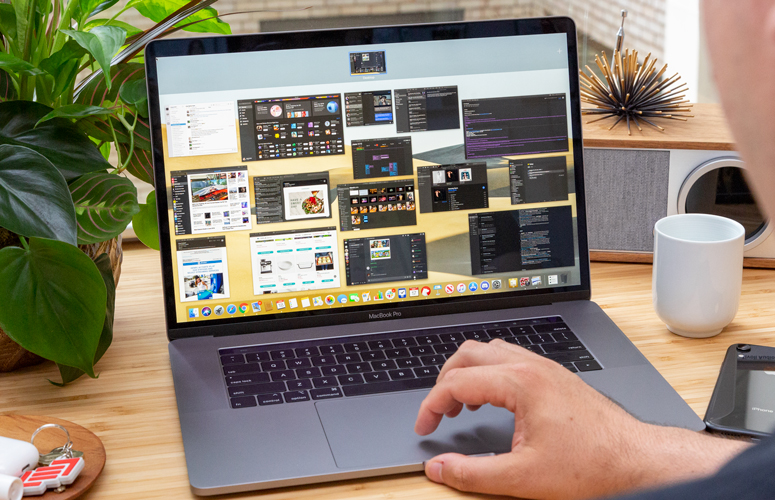
On the Geekbench 4 general performance benchmark, the MacBook Pro hit a super-high mark of 31,012, which is 46% higher than the 21,246 workstation average, and higher than the 19,775 from the XPS 15 (Intel Core i7-8750H processor, 16GB of RAM), the 21,889 from the Spectre x360 (Intel Core i7-8750H processor, 16GB of RAM), and the 17,134 from the MateBook X Pro (Core i7-8565U, 16GB of RAM).
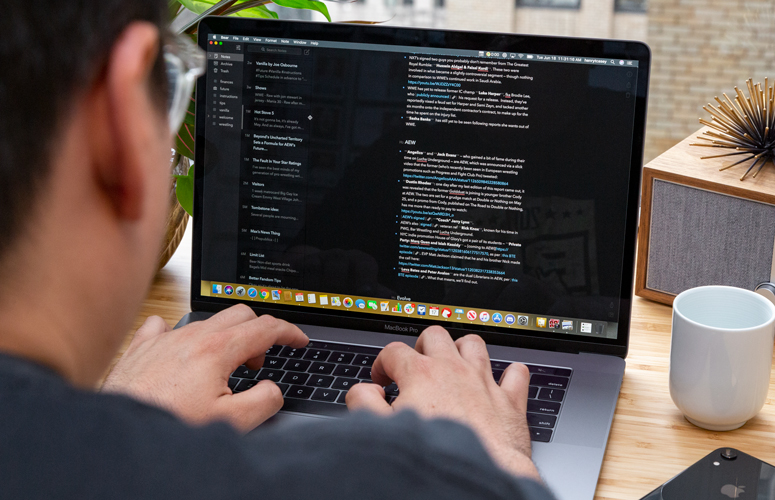
Apple continues to provide its pro users with seriously fast SSDs. The Black Magic storage speed test captured a write speed of 2,610.8 Mbps from its 4TB PCIe SSD, a rate that's 19% faster than twice as fast as the 2,190 MBps write speed from the 1TB NVMe SSD in the MateBook X Pro.
Simply put, the 2019 15-inch MacBook Pro is blindingly fast, with beefy 9th Gen Core i9 performance and SSD speeds that give the competition whiplash.
On our Handbrake test, which tests how long a laptop transcodes a 4K video to 1080p, the MacBook Pro turned in a short time of 8 minutes and 10 seconds, which is about 25%less time than the 11:17 category average. The XPS 15 (10:12), Spectre x360 (10:45) and MateBook X Pro (22:50) all turned in longer times.
MORE: How to Close Frozen Programs on a Mac
The 4GB AMD Radeon Pro Vega 20 graphics card in the MacBook Pro produced gaming performance that falls in the middle of the pack. The device ran the modest racing game Dirt 3 at 120 frames per second at max settings, which is about two-thirds of the 192 fps category average and the 4GB Nvidia GeForce GTX 1050 Ti-powered XPS 15 (189 fps). The Spectre x360 features that same card, but posted a significantly lower 61-fps rate.
Battery Life
The 15-inch MacBook Pro packs a lot of battery life, with more endurance than most workstations. The Laptop Mag Battery Test (Wi-Fi surfing at 150 nits) drained the notebook in 10 hours and 21 minutes, nearly 4 hours longer than the 6:28 category average. The XPS 15 (11:53) lasted longer, while the Spectre x360 (8:09) and MateBook X Pro (8:19) ran dry in less time.
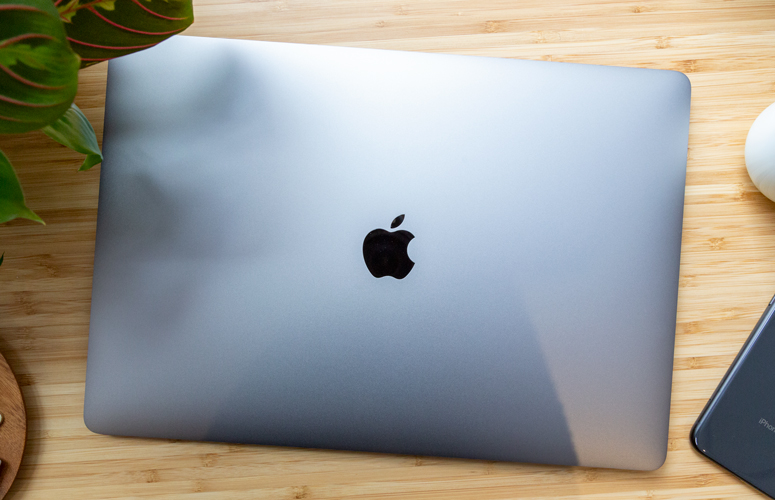
If you're considering 2019's 13-inch MacBook Pro, know that this larger model lasts longer. The smaller MacBook Pro lasted 8:41 on the Laptop Mag Battery test, giving it more than 1.5 hours less life than its big brother.
Webcam
The 15-inch MacBook Pro starts at $2,399, but its 0.7-megapixel webcam is so lackluster it could be found in a $399 laptop.
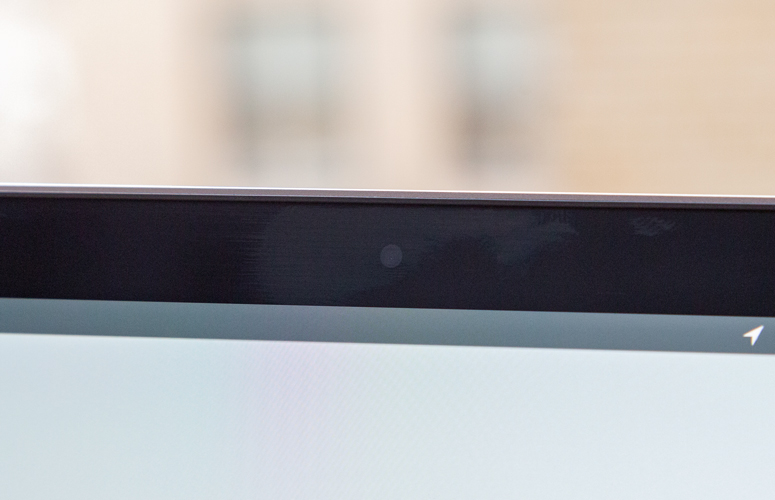
That's not a significant knock against the laptop, though, as nobody expects an internal webcam that doesn't wash out lighting sources or doesn't skimp on detail, two issues evident in a selfie I shot in our office. My shirt and skin tone look relatively accurate, though, so it's functional enough.
Heat
Even though the Core i9 MacBook we tested is packing a lot of heat, it stayed relatively cool during testing. After we streamed 15 minutes of HD video on the notebook, our heat gun picked up temperatures less than our 95-degree Fahrenheit threshold: 83 degrees on the touchpad, 93 degrees on the keyboard, and 91 degrees on the underside.
Software: Mojave and -- soon -- Catalina
The MacBook Pro currently ships with macOS Mojave, a less-than-thrilling update. Its most promoted new feature was Dark Mode, which is coming to iOS this fall. Our favorite features include Continuity Camera and Quick Actions.
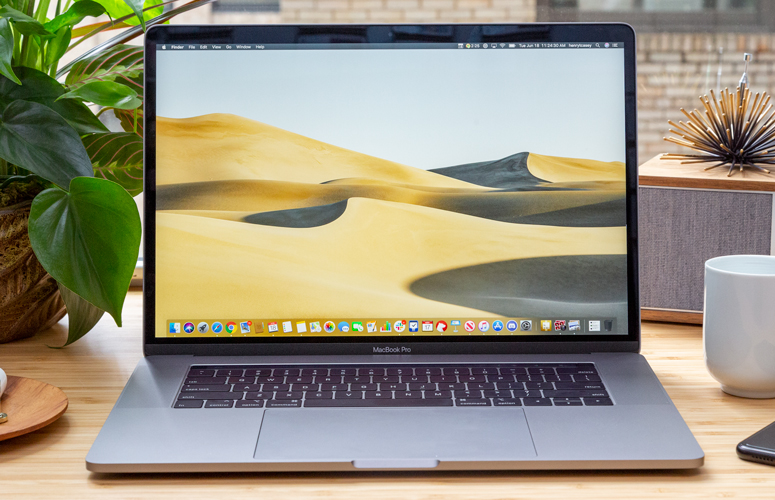
This fall, though, macOS Catalina will bring iPad apps to macOS with Project Catalyst, and give iPad owners the ability to extend their desktops. Oh, and iTunes is dying, in favor of the Music, Podcasts and TV apps.
Bottom Line
Simply put, the 2019 15-inch MacBook Pro is blindingly fast, with beefy 9th Gen Core i9 performance and SSD speeds that give the competition whiplash. On the downside, the MacBook Pro has spent a few too many years with the same look, and arguably far more time with the Butterfly-key switch than it should. The improvements in this year's Butterfly mechanism at least sound promising. Plus you get a great display, powerful audio and long battery life.
The cheaper Dell XPS 15 should definitely be your pick if you're looking for the most endurance, as it also lasted 1.5 hours longer on a charge, though it's not as fast and its display isn't as bright. But for those looking for the best MacBook around and who can afford the ultra premium price, the 15-inch MacBook Pro is the model to grab.
Credit: Laptop Mag
Apple MacBook Pro (15-inch, 2019) Specs
| Bluetooth | Bluetooth 5.0 |
| Brand | Apple |
| CPU | 8-core Intel Core i9-9980HK @2.4GHz, Turbo Boost up to 5.0GHz |
| Company Website | https://www.apple.com/macbook-pro/specs/ |
| Display Size | 15.4 |
| Graphics Card | AMD Radeon Pro Vega 20 |
| Hard Drive Size | 4TB |
| Hard Drive Type | PCIe SSD |
| Highest Available Resolution | 2880 x 1800 |
| Native Resolution | 2880 x 1880 |
| Operating System | macOS Mojave |
| Ports (excluding USB) | Thunderbolt 3, Headphone |
| RAM | 32GB |
| RAM Upgradable to | 32GB |
| Size | 13.8 x 9.5 x 0.6 inches |
| Touchpad Size | 6.1 x 3.9 inches |
| USB Ports | 4 |
| Video Memory | 4GB |
| Warranty/Support | 90 days of complimentary technical support, 1-year limited warranty. |
| Weight | 4 pounds |
| Wi-Fi | 802.11ac |
| Wi-Fi Model | 802.11ac Wi-Fi wireless networking; IEEE 802.11a/b/g/n compatible |
